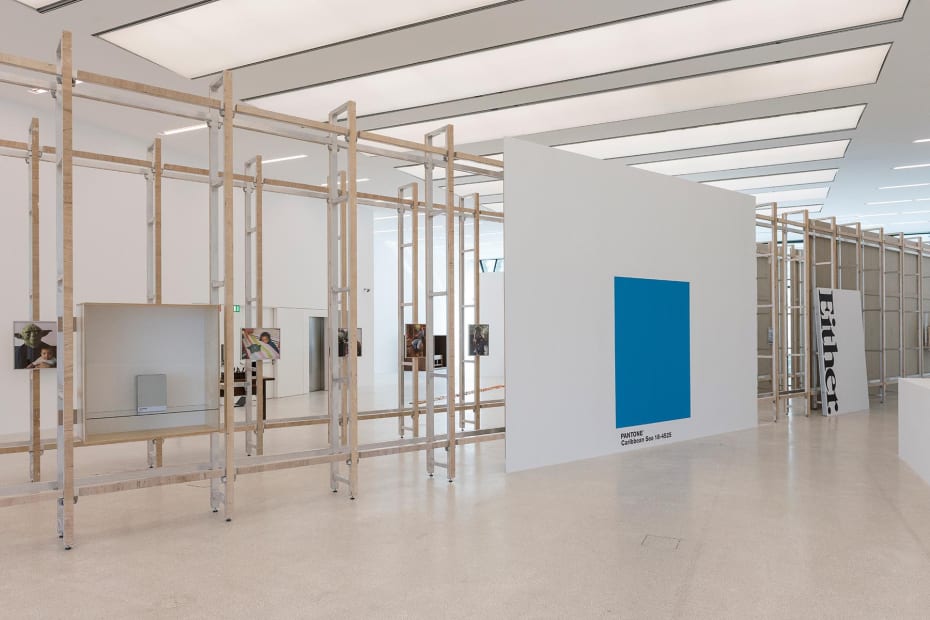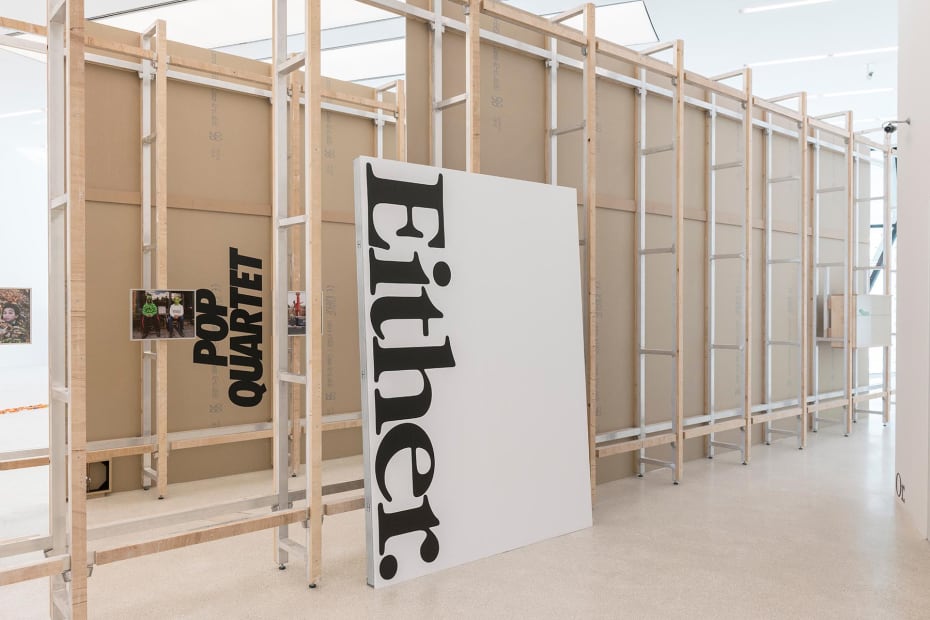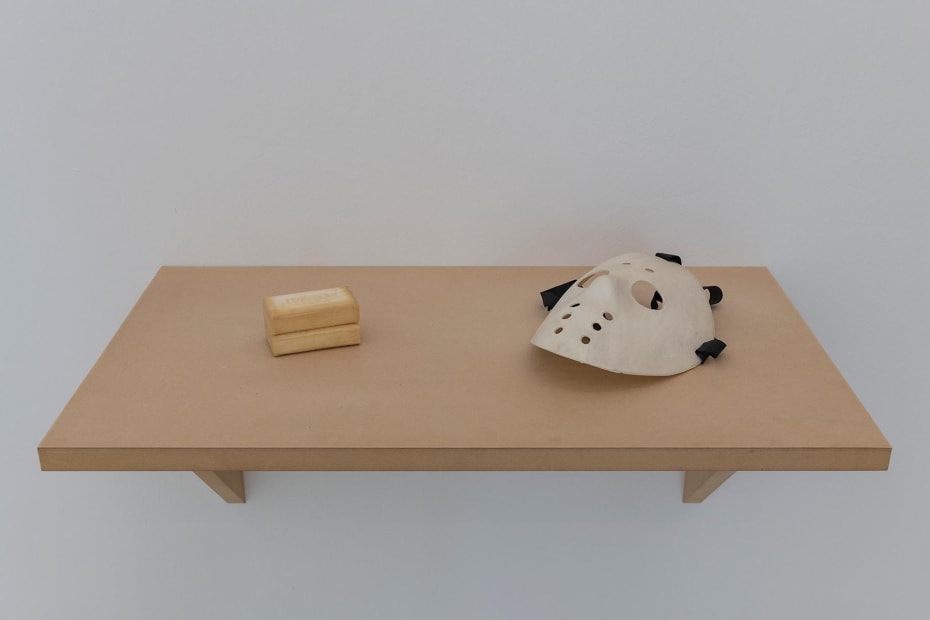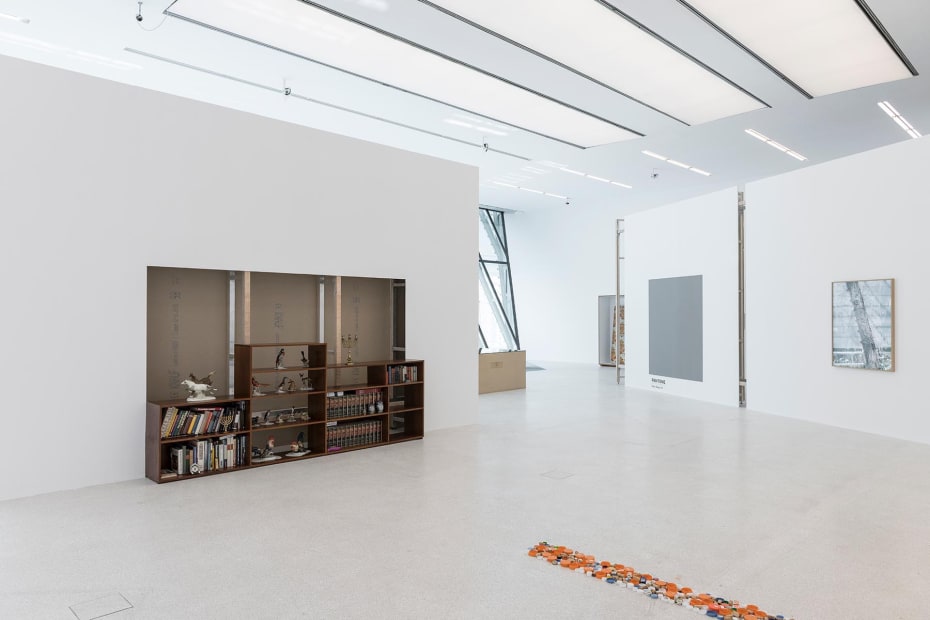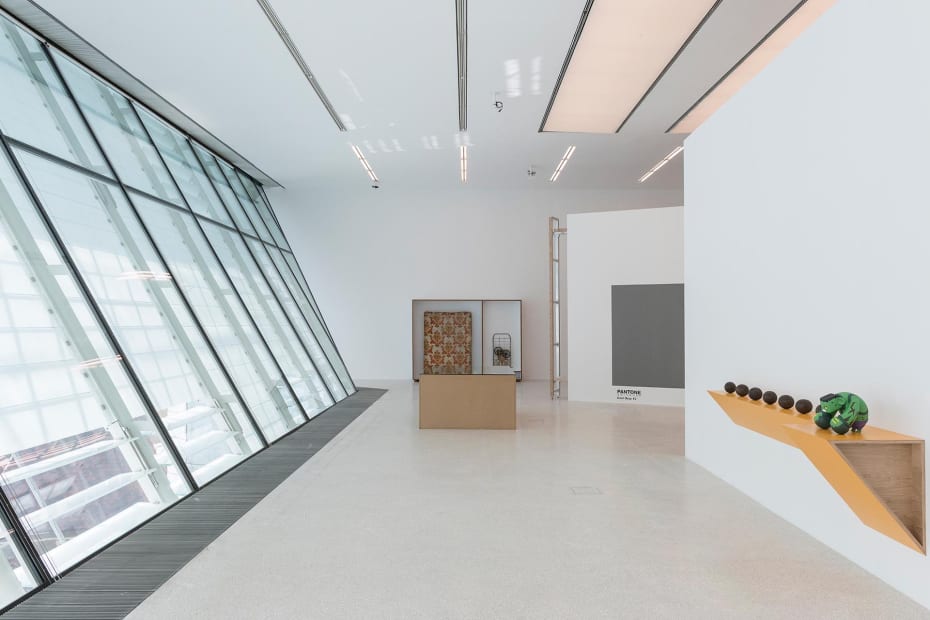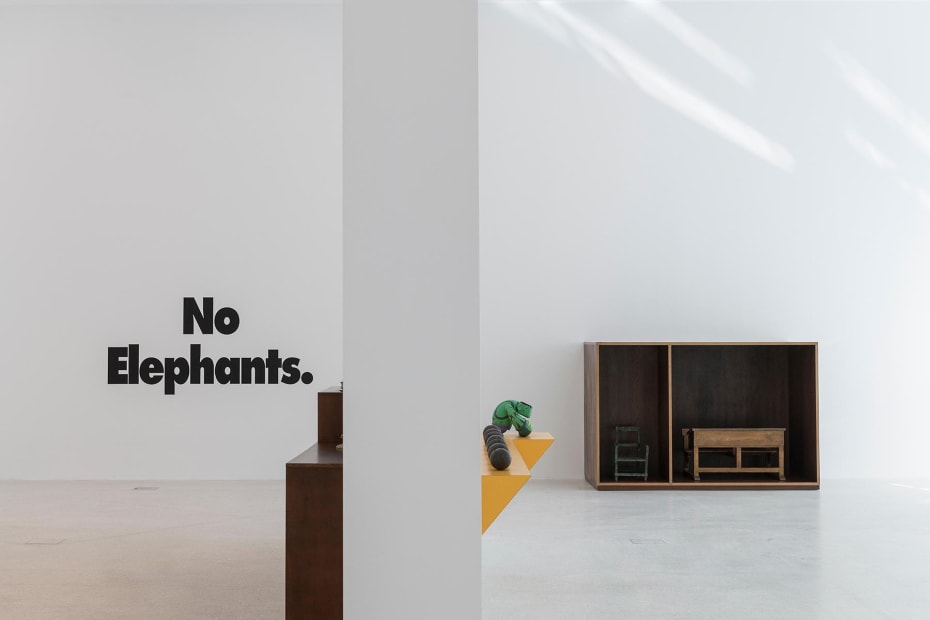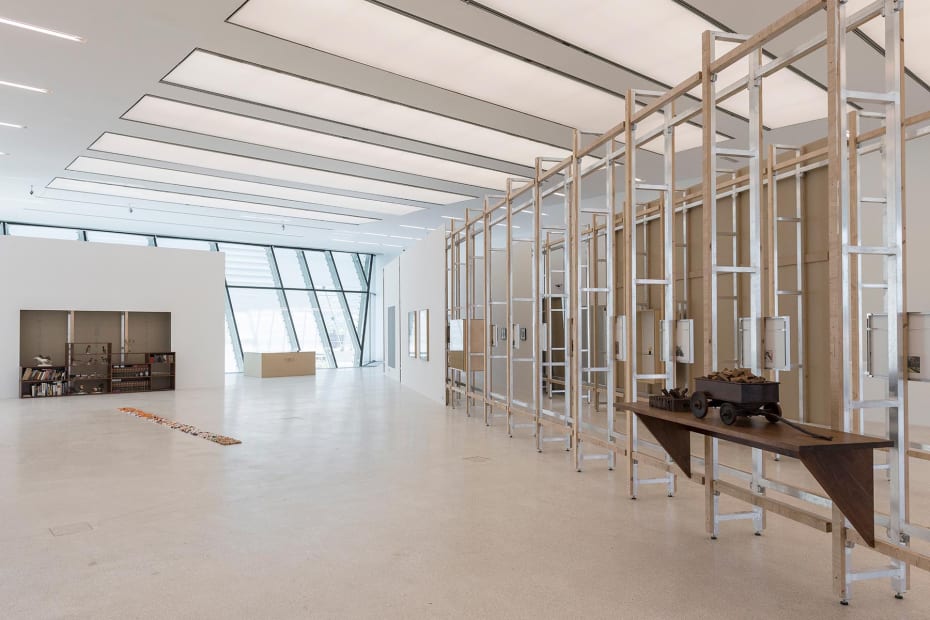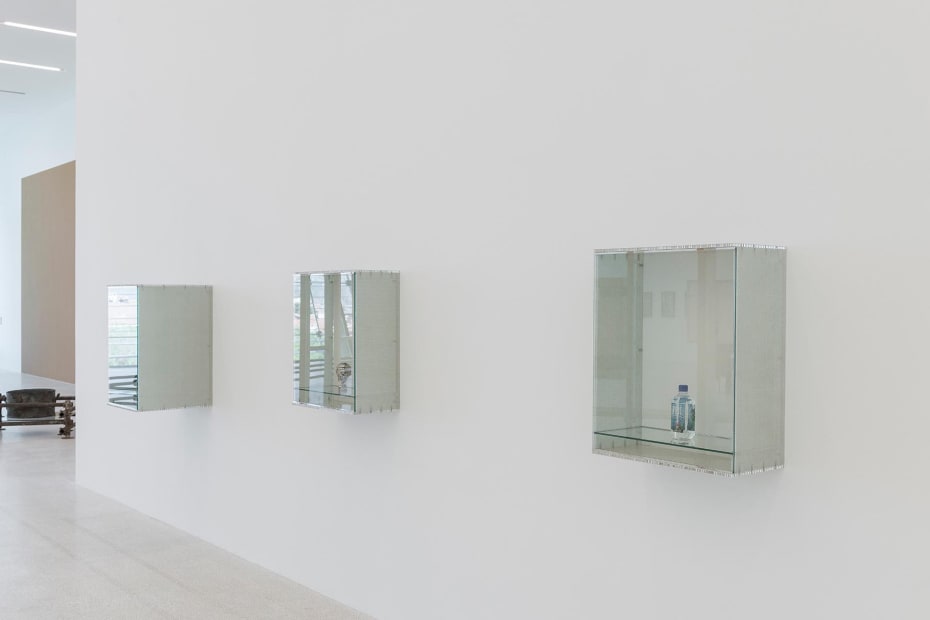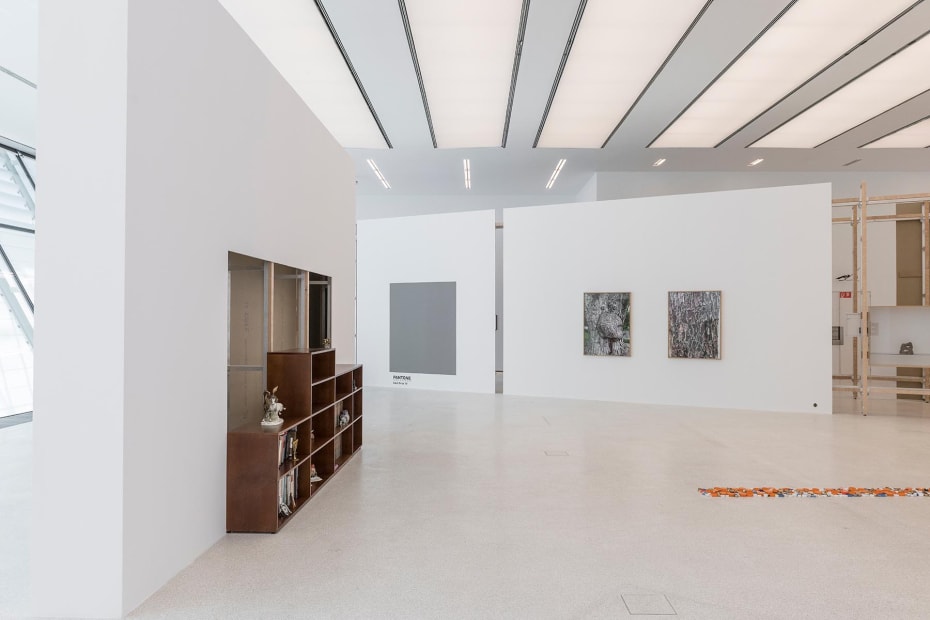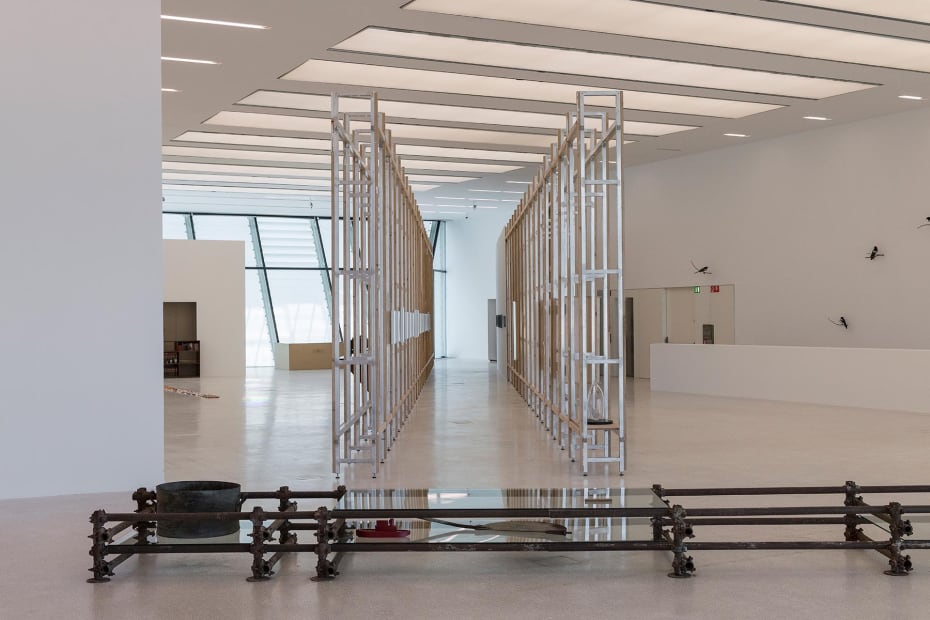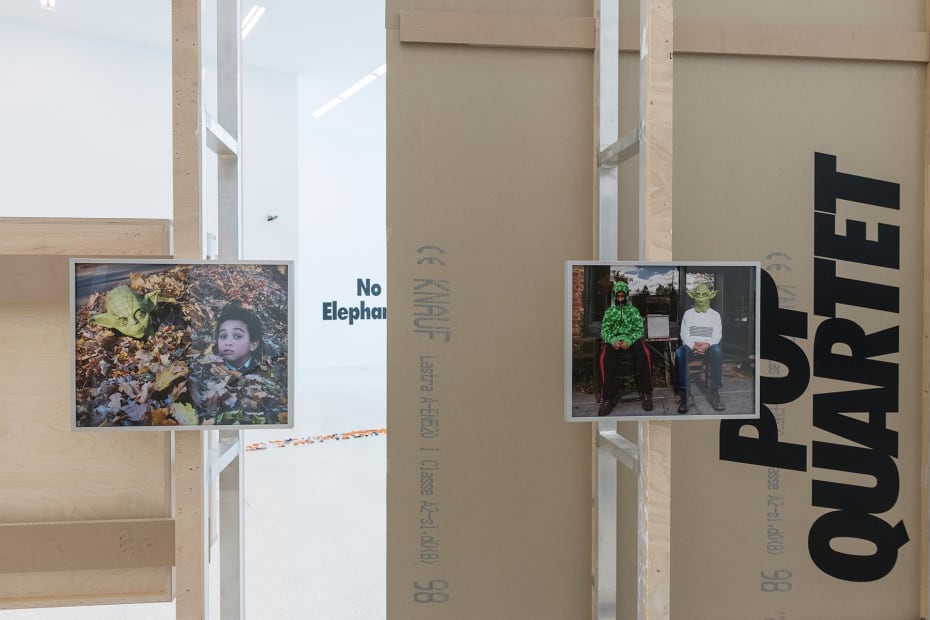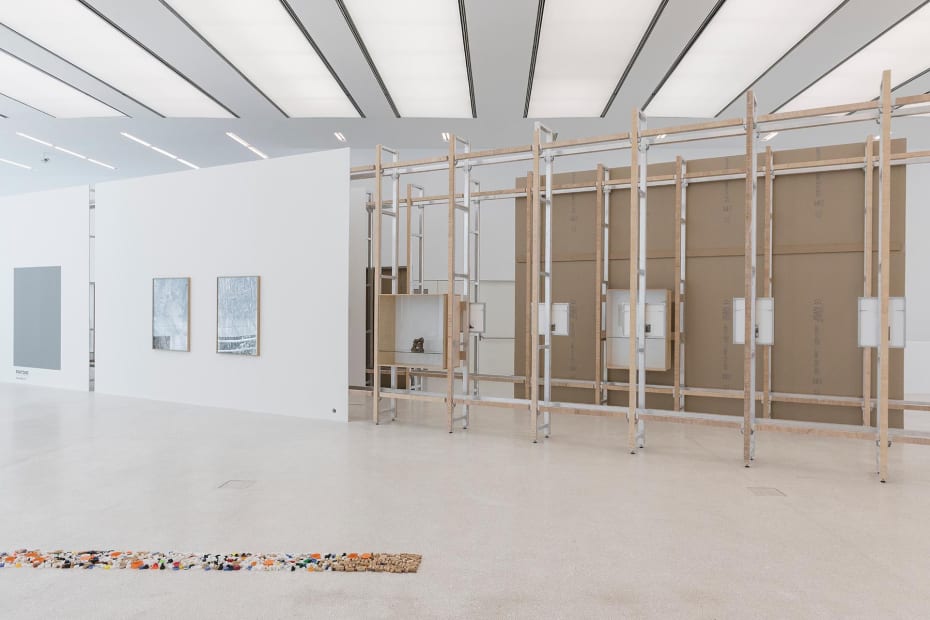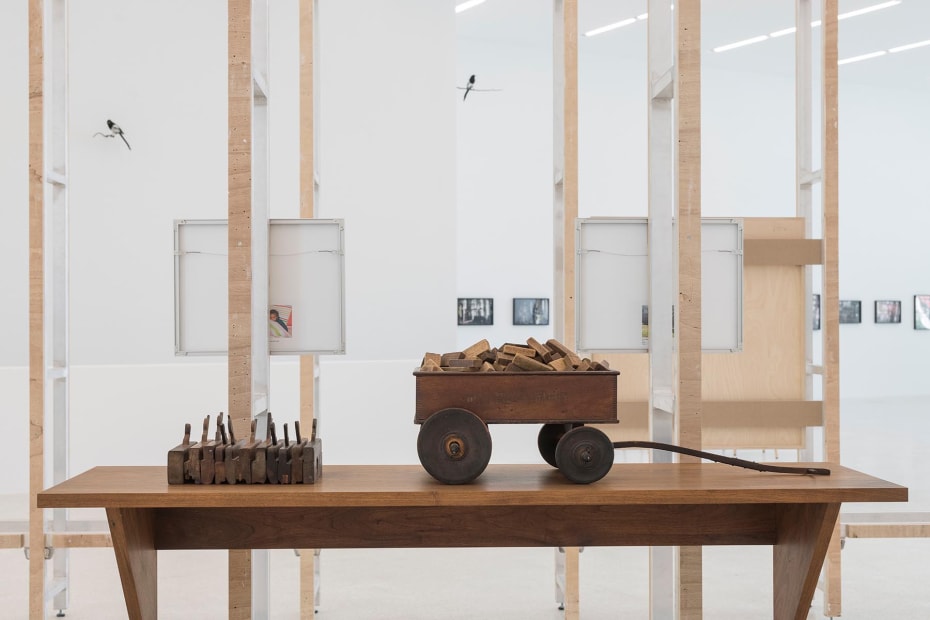Museion is pleased to present an exhibition by Haim Steinbach (*1944, Rehovot, Israel), one of the most influential contemporary artists, whose work is to be seen in a museum in Italy for the first time in over 20 years. The exhibition is a survey of selected works from the last thirty years, bringing together shelf works, containers, text pieces, wall paintings and large-scale installations.
Since the mid-1970s, Steinbach’s practice has been focused on the transient status of the object and its meaning in art and everyday life. His art works became well known in the mid-1980s with objects that he selected and arranged on shelves. Several purchased or found objects are placed in relations of types, numbers and functions that set in motion patterns of difference, repetition and singularity. By displacing them from their standard place of function or object affinity, and placing them in company of others, context and function take on unpredictable identities. Unexpected encounters occur between different objects on the shelf. The sneakers, teapots, soaps and Jason Voorhees mask from the movie “Friday the 13th” can be compared to the robbers, who steal the viewer’s conventional convictions, in the above quote by Walter Benjamin.
In his exhibition at Museion, Haim Steinbach focuses on the staging of the museum itself. By using functional museum equipment and turning its intended application on itself, he applies the same gesture of displacement as he does with his objects. Moveable Wolfsburg Walls used by Museion for its exhibitions are now stripped bare or they may be partly covered with plasterboard that supports text or colour. These coloured plasterboards relate to the history of naming and colour coding. Literature is another important point of reference for Haim Steinbach.
The wall-painting in the foyer on the ground floor of Museion, which was reformatted specifically for the show in Bolzano, presents, in fact, a line fragment from a poem by Rainer Maria Rilke that the poet wrote in 1897 whilst staying in the area, namely at Schloss Englar (Appiano/Eppan).
Around 1977, Haim Steinbach began to consider the idea of the “display.” Display is the selection and arrangement of objects. It is a presentation, in the sense of putting things on display in the museum. Or it may be something we do at home, when arranging family pictures on the counter. An early such work, Display #7, 1979 was shown at Artist Space in New York. The artist asked friends and family to give objects that he arranged on shelves mounted on the wall against wide strips of wallpaper patterns of different cultural origins.
By 1984, Steinbach had conceived of the basic triangular wedge shelf that consisted of three angles: 40°, 50°, and 90°. This structure remained constant in many works that followed. The shelf was sectioned into parts that varied in size depending on the objects placed on them. In that respect, the shelf became a device like a measuring tape or a scale. It became a system of proportioning that related the space and volume of a singular object, as well as objects in repetition.
For Steinbach, colours are objects. We give names to colours, like red, blue or green. Red is red, like a rose, or blood, fire and love. A rose could also be blue, yellow, or white. The Dulux paint company in Great Britain named a certain brown “Starbucks Roast.” Steinbach took that colour, made it into a wall painting and appropriated the title. It is in this respect that he considers both title and colour to be a found object. Thus, having become a form of speech, he retitled the work, starbucksroast. Starbuck is a character in Melville’s, “Moby Dick.” Starbucks is a coffee shop chain.
Vernacular sayings and titles traverse across the linguistic meanings of words. In print, they take on characters known as typefaces. It is a language of desires and relations. A letter, a word and a sentence may feel light or heavy, playful or serious depending on the context and form it is given. Haim Steinbach collects text statement that have been set to type and that appear in print. He transfers them to paper or a wall precisely as they were found. The poetics of the text in the field of typography is its architecture.
